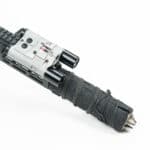Every day, behind the veil of bureaucracy, super-secret scientists invent new lights, lasers, and technology that could cause armageddon if it were to get into the hands of a non-government actor. Meanwhile, the tinkerers of the world work hard to build something more useful than an advanced mousetrap. The dichotomy that has existed between military and civilian night vision is tearing fast, meanwhile, Phantom Hill Designs is not waiting for daddy government to say we can have our NODs and Laser, too. By incorporating a visible/white light, IR laser, and IR illuminator into a single housing, all for under $800, the CTF-1 looks like it could redefine what a true entry-level night vision setup would look like.

At the end of the day, there’s no truly casual way to get into night vision. At the same time, items like the CTF-1 are pushing the cost of entry down to more attainable levels. Being night vision capable requires a functional ecosystem of gear starting with NODs but extending to the firearm as well. NODs, Mount, Helmet, Firearm, Suppressor, Optic, Light, Laser, and Illuminator quickly add up. And while we’ve seen some more affordable-but-performing options cover so many of these bases: from opting for a bump helmet instead of a ballistic one, to rolling with a Vortex Sparc SolAR instead of an Aimpoint T2 Micro, one necessary item has seen very few new options: the IR aiming device.

The Phantom Hill Designs CTF-1 combines a 380-lumen white light with an IR designator and IR LED flood/illuminator into a single unit that takes CR123 batteries. The housing sets it apart even further, being 3D sintered/printed out of aluminum, with integrated actuator switches: one for visible, one for IR. The laser can be zeroed, and adjusts with non-clicking set screws.
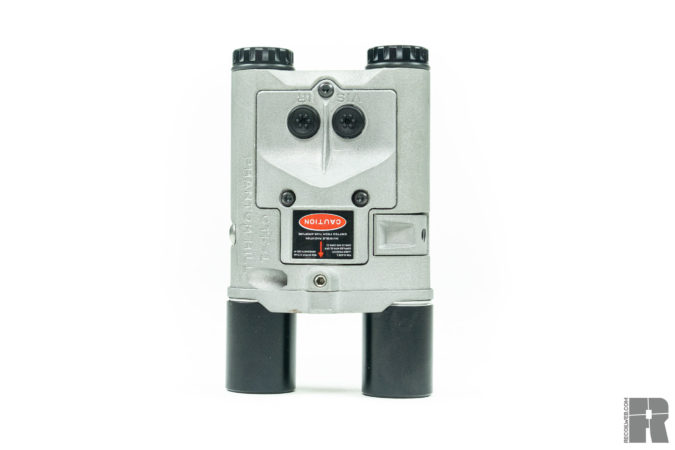
The two heads: one for IR, and one for white light, screw off to reveal LED bulbs. Rumor is future versions might accept Surefire, Modlite, or similar pattern heads, but we are unable to substantiate this at this time. Users can still swap out the lenses.
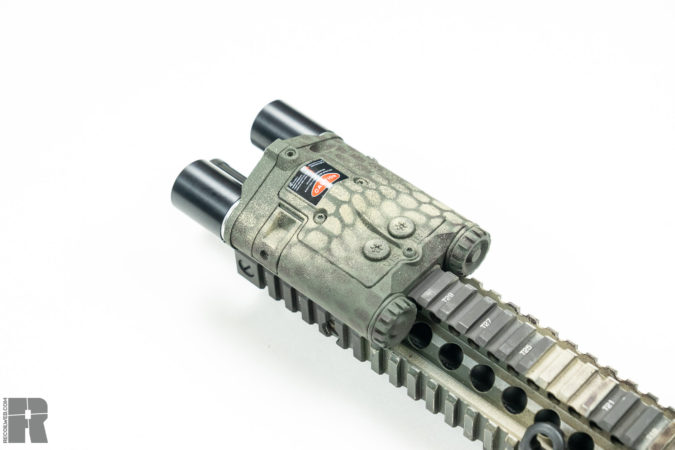
Since it uses an IR LED for the illuminator, it doesn’t throw a sharp, central cone, but rather a bloom that cools as it gets further from the center.
Keeping Up With the Concept
The Phantom Hill designs CTF-1 is not trying to replace the PEQ-15, nor undercut the DBAL, but provide a functional system that solves multiple needs. It aims to outperform pistol-style designators, without costing the $1,500 of a typical civilian laser. Does it accomplish this? Technically yes.
As unfair as it is, the standard for such systems is often driven by what is being fielded in the military. To compare a Surefire Mini Scout, and full-power PEQ-15, which easily can cost north of $4,000 altogether, not to mention the volatility of the secondary market, an $800 solution really doesn’t sound so bad. The release of the Phantom Hill CTF-1 couldn’t be more perfectly timed with the growing crowd of civilian night vision owners who are pioneering in their own right just what night-vision capable can mean.
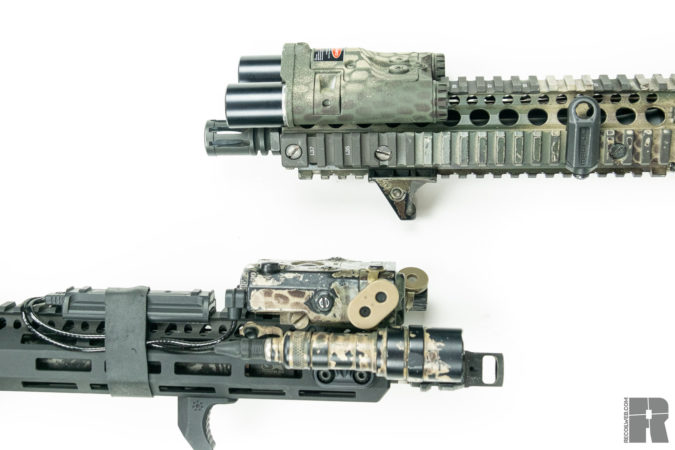
The light, laser, and illuminator are best described as qualitatively adequate: they’re bright enough, crisp enough, and patterned to play their roles effectively. Quantitatively, others will out-perform the CTF-1, but not proportionally to the cost of entry.
Clearly designed to ride on an AR-15, the shape of the CTF-1 can’t go on just anything. The tubular sections that hold the batteries and LEDs ride lower than the attachment point for a profile closer to the rail. As a result, firearms without a raised top rail won’t accept it. Good thing the AR-15 isn’t going anywhere. For those outfitting a CZ Scorpion, the HB Industries rail works.
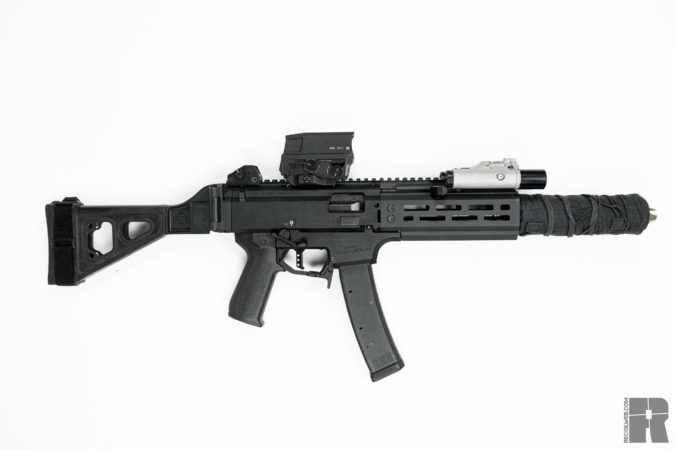
The buttons are surprisingly crisp in a world of mushy options. Although a small ridge divides them from each other, they are close enough together to raise concerns of hitting the wrong button in a pinch: exactly when you don’t want that to happen. In Special Operations circles, accidentally triggering your white light is treated like a negligent discharge of a firearm, and for good reason. Capping the white-light side, and spending some serious time with the Phantom Hill CTF-1 are highly recommended.
The left button activates the white light, the right activates both the light and the laser.
The sintered metal body differs from other lasers, as it tends to absorb light, or at least not reflect it as much. This matters very little in the daylight, but factors in at night, in the event that you’re not the only one seeing in the dark. Cameras that can pick up some of the IR spectra are still becoming more and more affordable: your camera doorbell and cell phone most likely stretch just a bit into it.
Carrying the Fire
Phantom Hill’s design does more than illuminate the darkness for those who can see in the dark. It signals and supports a growing interest in Night Vision gear from entrepreneurs and tinkerers. It is here in history when we typically see the sudden proliferation and improvement of technology, and we’re okay with that.
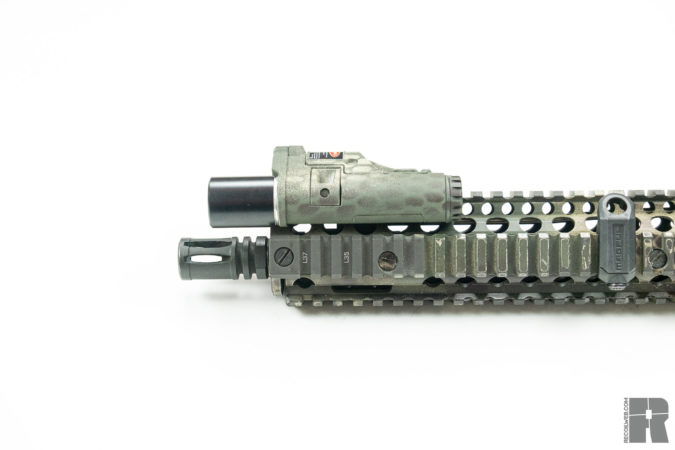
The CTF-1 carries its weight as a one-stop-shop for those who are aware of working with its nuances. It distinctly lacks the pompous bravado of saying that it’s “just as good” as military-grade counterparts, but instead brings a functional light, laser, and illuminator to the table in a single unit that runs on some of the most common batteries in the ecosystem. While on one hand, the CTF-1 solves a problem, on the other, it inspires future possibilities.
Phantom Hill Designs CTF-1
Weight: 9.9 ounces with batteries
Length: 4.75 inches
Height: 1.5 incches
White Light: 380 lumens
IR Laser: 850nm
IR Illuminator: 850nm
Batteries: 2x CR123
Battery Life: 3 hours
MSRP: $800
URL: phantomhill.design
More on Night Vision
And on OFFGRID
- How to set up your Rifle for Low-Light/No-Light Conditions.
- Night Vision 101.
- GBRS Group: Shadows that Bite.
- Night Vision Helmet Setup Guide.
- Sionyx Aurora Pro: Color Night Vision Review.
- S&S Precision: PlateFrames, Chest Rigs, and Illumination: More than Maritime Excellence.


